Contents
Cucumber Temp F1, belongs to the universal species. It is aesthetically attractive, ideal for preservation and preparation of fresh fruit salads. A short-fruited hybrid, gardeners fell in love with early maturity and a quick, short ripening period. Among other things, the fruits are tasty, juicy and fragrant.
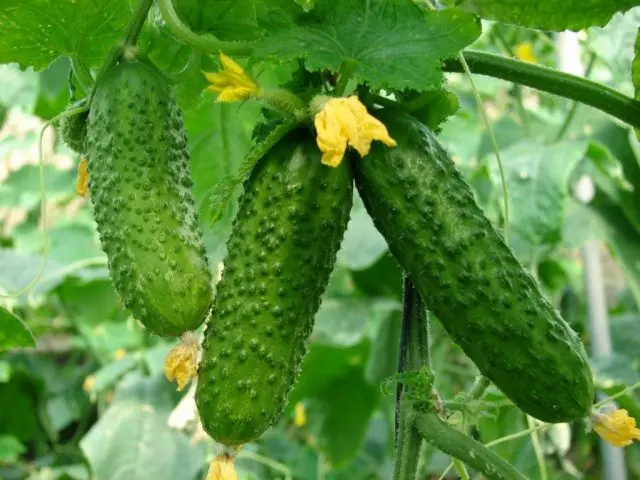
Description of the variety of cucumbers “Temp”
The Temp f1 cucumber variety is produced by the famous Semko-Junior company, which is famous for its good quality products. A short-fruited hybrid bred for planting in greenhouses made of film, glass and on loggias. It does not require the participation of insects for pollination and gives good harvests.
After the emergence of seedlings, the first greens are harvested after 40-45 days. For those who prefer pickles, you can enjoy the fruits after 37 days.
The parthenocarpic variety of cucumbers Temp F1 is characterized by weak branching and has only female flowers during flowering. The central stem may have several flower clusters and is indeterminate.
During the growing season, intensively green leaves of medium size are formed. Each leaf axil can form the ovary of 2-5 cucumbers.

Description of fruits
The resulting ovary of Temp cucumbers takes the form of a cylinder, has a short neck and medium-sized tubercles. The length of the fruit reaches 10 cm, and the weight is up to 80 g. Gherkin – up to 6 cm with a weight of up to 50 g and pickle – up to 4 cm, weighing up to 20 g. It should be noted that mature cucumbers are juicy, crispy, fragrant with a delicate peel. All fruits of the Temp-f1 variety grow about the same size and look neat when folded into jars.

Main characteristics of the variety
A hybrid of cucumbers of the Temp-f1 variety is classified as drought-resistant, the culture tends to survive high temperatures up to +50 ° C. The temperature in the soil must not fall below + 16 °C when sowing. Under such conditions, cucumbers develop fully.
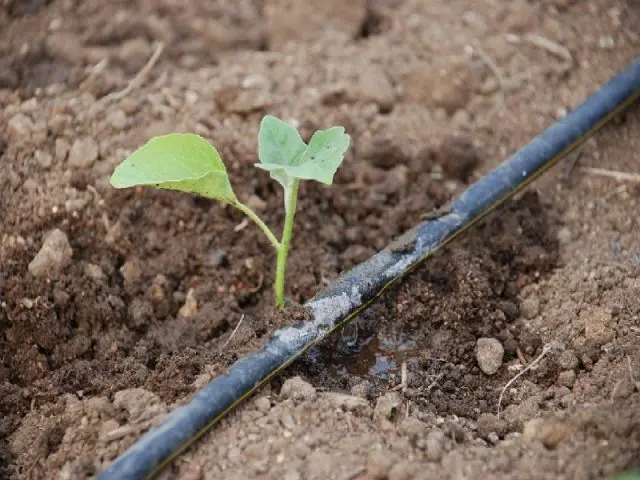
Productivity
The total yield per square meter varies between 11 – 15 kg. If the collection occurs at the stage of formation of pickles – up to 7 kg.
The yield of the Temp-f1 hybrid can be influenced by many different factors, unaccounted for nuances:
- soil quality;
- landing site (shaded area, sunny side);
- climatic conditions;
- timely irrigation and top dressing of Temp-f1 cucumbers;
- the nature of the branch;
- planting density;
- predecessor plants;
- harvest frequency.
Cucumber Temp F1 is an unpretentious variety, but this does not mean that they do not need care. The fact that they are resistant to diseases also does not exclude their occurrence. To avoid unpleasant phenomena, the beds should be pushed after watering, fertilizing, and weed control.
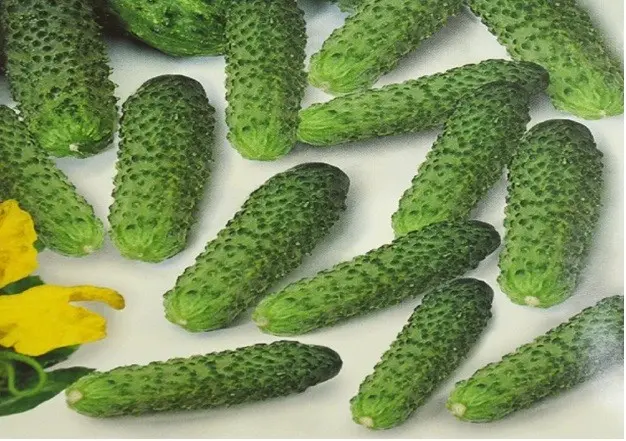
Pest and disease resistance
Usually cucumbers are exposed to the negative effects of brown spot and powdery mildew, the cucumber mosaic virus. Cucumber Temp f1, resistant to common diseases, as drought and excessive watering, rainy weather do not harm the variety.
Pros and cons of the variety
Cucumber variety Temp °f1 was bred for planting in greenhouse conditions. It deserves the attention of gardeners, as it has a lot of advantages over other varieties:
- early ripening of cucumbers;
- attractive fruits and rich taste;
- disease resistance;
- self-pollination;
- large harvests of Temp-f1 cucumbers;
- universality;
- unpretentiousness.
Cucumber Temp-f1 does not require large areas for cultivation and does not lag behind in growth in conditions of constant shade.
The Temp-f1 variety has its drawbacks, which also affect the choice of the buyer. Hybrid cucumbers are not suitable for seed collection, and the price in shops for gardeners and gardeners is quite high.
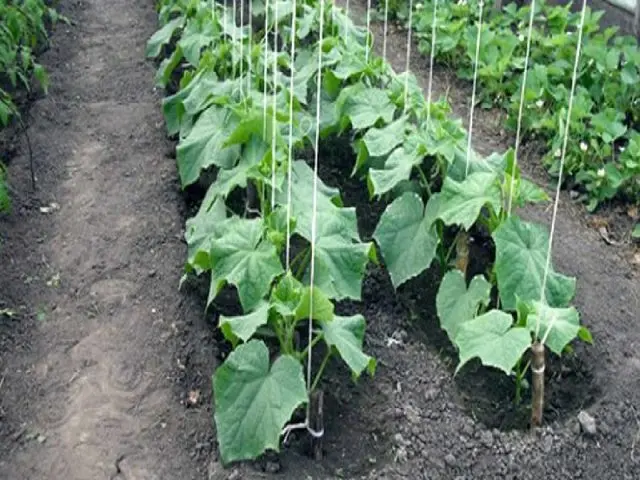
Growing rules
The variety of cucumbers Temp-f1 is universal, and the method of planting it is determined by climatic conditions. Seeds can be applied outdoors if spring comes early and frosts are not expected, and the soil is warm enough. In more northern regions and the central strip, planting seedlings in greenhouses is practiced.
The air temperature must be kept stable at least 18 oC at night. For irrigation, water is harvested in advance, it is heated before irrigation. Usually, all sowing work related to cucumbers of the Temp-f1 variety is carried out in May-June.
Terms of sowing
The material for sowing cucumbers Temp-f1 for seedlings is laid in the ground in the last ten days of May, deepening a couple of centimeters into the soil. The distance between the beds is maintained up to 50 cm. After friendly shoots appear, the plants are thinned out. As a result, up to 3 cucumbers are left per meter of the row.
Choosing a place and preparing beds
Cucumber beds for the Temp-f1 variety are formed from fertile soil. If necessary, pour up to 15 cm of nutrient soil on the surface. It is important to consider some nuances:
- Before cucumbers of the Temp-f1 variety in the soil, it is recommended to grow potatoes, tomatoes, legumes, table root crops.
- The advantage when planting is given to light, fertilized soils.
- How to properly arrange the beds – does not matter. They can be either longitudinal or transverse.
- It is important that the site is watered in a timely manner.
If pumpkin crops were the predecessors of Temp-f1 cucumbers, you should not expect good harvests.
How to plant
The optimum temperature for planting seeds in the ground is 16-18°C. After sowing, the sprinkled seeds are mulched with peat (layer 2-3 cm).
Seeds of Temp-f1 cucumbers do not deepen into the ground by more than 3 – 3 cm. They wait for seedlings, having previously covered the beds with a film or plexiglass. In the central zone of the country, sowing work with cucumbers is carried out in late spring – early summer.
The seedling method of growing allows you to get the first harvest one and a half to two weeks earlier. The method is mainly suitable for growing in colder regions.
It was noted that seedlings of Temp-f1 cucumbers do not tolerate diving, and there are also certain growing rules, following which you can fully evaluate the yield of the variety.

What you should know about growing the Temp-f1 cucumber variety:
- provide irrigation with settled, heated water (20 – 25 ° C);
- daytime temperature should be kept in the range of 18 – 22 ° C;
- at night, the mode is reduced to 18 ° C;
- fertilize mainly under the root, twice: urea, superphosphate, sulfate and potassium chloride;
- before planting seedlings in open ground, it is subjected to hardening.
When transplanting Temp-f1 plants in open ground, preference is given to those with thick stems, short intervals between nodes and rich green color.
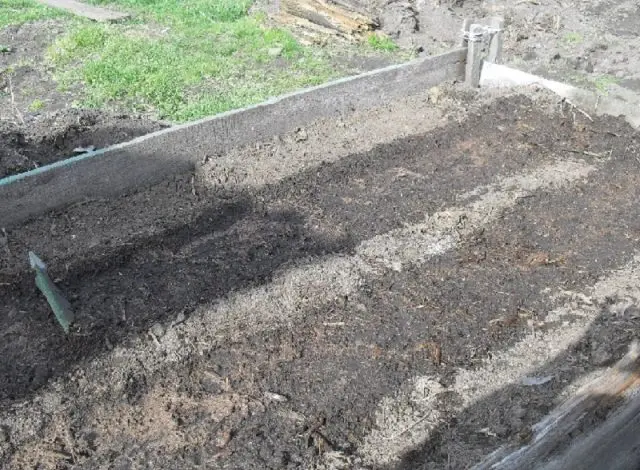
Aftercare for cucumbers
Proper care for Temp-f1 cucumbers is to prevent the effect of frost on seedlings, timely plowing, irrigation and top dressing. To exclude the effects of low temperatures, special shelters and arcs are used. If the soil surface is not covered with mulch, the top crust should be loosened, soil crusts should be removed. After doge and watering, the damp earth must be fluffed up. Warm water is used for irrigation. Preference is given to drip humidification.
Temp-f1 cucumbers are fertilized alternately with organic (bird droppings or slurry) and mineral fertilizers. In order to strengthen the plant as much as possible, to increase the resistance to parasites and diseases, it is better to add seedlings immediately after rainfall or irrigation.
The formation of bushes has a great influence on the yield of Temp-f1 cucumbers. If cultivation is carried out on a trellis, the leaves located below do not rot and remain dry. The method is preventive and eliminates the development of powdery mildew.
Conclusion
Cucumber Temp-f1 is a short-fruited variety that deserves recognition. It begins to bear fruit early, has a pleasant taste of freshness and a wide range of uses in cooking. Farmers liked the pest-resistant plants and the lack of the need for diving. The impression is not overshadowed even by an excessively high price for seed, as the result obtained during the season satisfies the taste preferences of the consumer.










